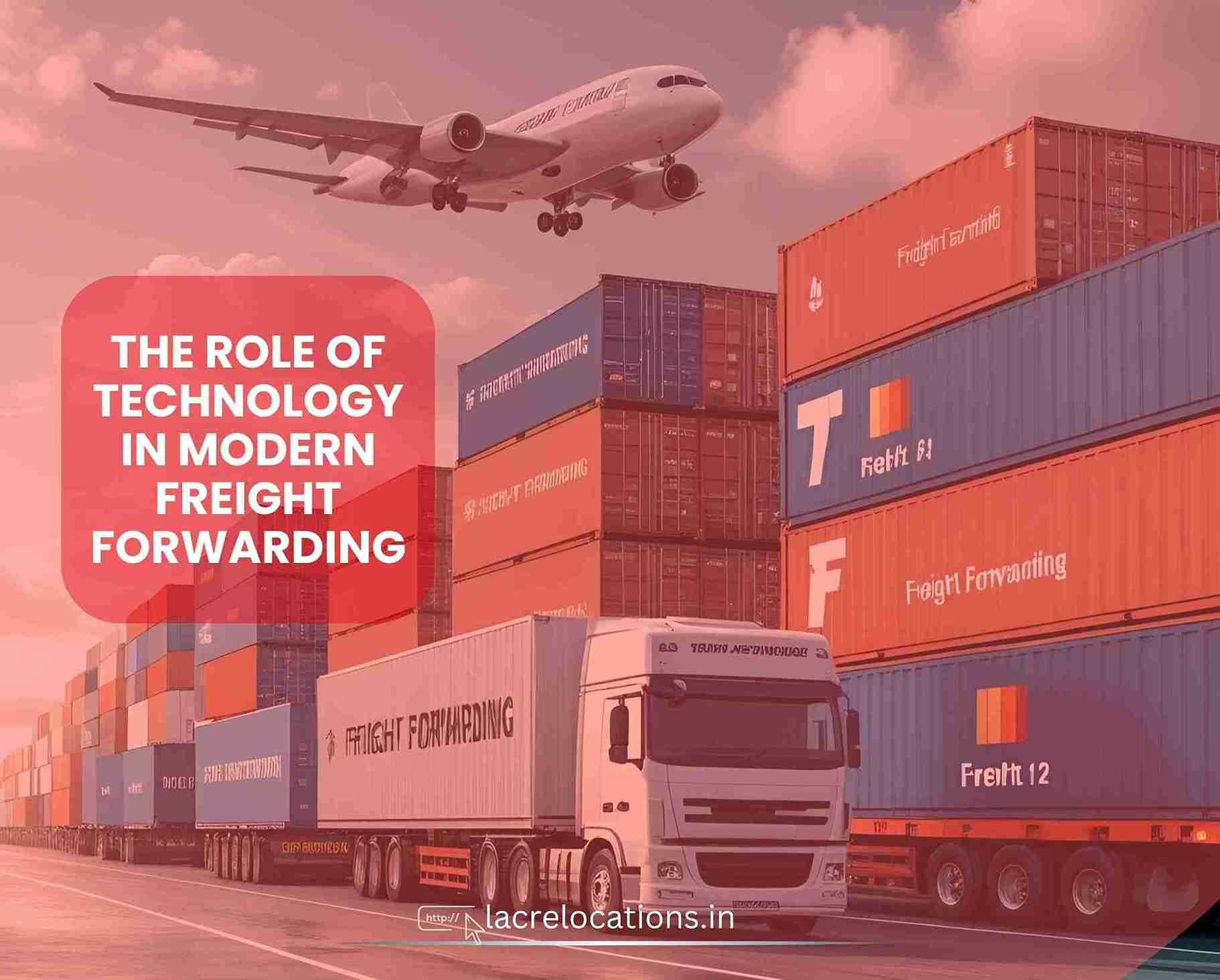Freight forwarding is a key part of global trade as it helps move goods across countries and continents. In the past, most freight forwarding work was done with paper, phone calls, and emails. But as customer demands grow, the industry is shifting. Faster delivery, real-time updates and cost control are more important than ever.
Technology is now at the center of freight forwarding. It reduces delays, lowers mistakes, and improves the customer experience. This blog explains how different tools are changing the freight industry and helping freight forwarders meet new demands.
Key Technologies Transforming Freight Forwarding
Digital Freight Forwarding Platforms
Digital freight forwarding platforms replace manual work with simple digital tools. Tasks like booking, quote generation, document sharing, and cargo tracking are handled in one place. This saves time and avoids errors.
Unlike the old way, which involved emails and phone calls, digital platforms offer instant pricing and real-time shipment updates. Users can log into a web portal or app and manage shipments from start to finish.
It integrates carriers, customs and logistics in a single digital system. This simplifies the entire shipping procedure and enhances service quality.
Real-Time Shipment Tracking
Real-time shipment tracking uses GPS and IoT sensors to follow goods as they move. These tools track location, temperature, and handling conditions. Users can see where shipments are at any time.
This helps companies plan better and act fast if problems occur. It also builds trust with customers, who want clear updates and fewer surprises.
It offers live tracking dashboards that show updates and alert users about delays or changes. Real-time shipment tracking is now a must-have feature in digital freight forwarding.
Artificial Intelligence and Machine Learning
Artificial intelligence in logistics brings more speed and smarter planning. AI helps pick the best routes, reduce fuel use, and avoid traffic delays. It can also scan documents and pull data in seconds.
Machine learning looks at past data to guess future problems, like weather delays or customs checks. This helps avoid risks and plan backup options.
Using AI and machine learning well needs big data sets and skilled people to manage them. But once set up, it saves time, reduces costs, and improves service quality.
Blockchain for Secure Documentation
Blockchain in supply chain systems helps to keep shipping papers secure and easy to verify. When a document is added to the blockchain, it cannot be modified. This cuts fraud and makes records more trustworthy.
Smart contracts are also part of blockchain. These are digital deals that trigger actions, like payments, once conditions are met, such as proof of delivery.
While blockchain offers clear benefits, it still faces some problems. Many systems need to agree on common rules, and some countries have unclear laws. But as these issues are solved, blockchain will likely grow in use.
Cloud-Based Logistics Platforms
Cloud-based logistics technologies allow teams to work together from anywhere. These systems keep data online, allowing everyone to view the most recent information in real time.
They connect easily with custom tools, ERP systems, and customer portals. This keeps processes smooth and avoids double entry or errors.
Cloud services are also affordable to operate. You don’t need huge servers or IT teams. Cloud-based technologies provide flexibility to freight forwarders and enable them to handle work more effectively at any scale.
Benefits of Technological Integration in Freight Forwarding
Operational Efficiency
Automation minimizes paperwork and human errors. Booking and customs processes become more efficient and accurate. Route optimization and predictive maintenance are now possible due to AI and machine learning which reduces delays and downtime even more.
Enhanced Customer Experience
Customers get live updates and clear communication. This makes the service more reliable and easier to manage. Real-time visibility and user-friendly interfaces also enable customers to follow their shipments, receive notifications, and make informed decisions quickly.
Risk Mitigation
Tech tools help predict and avoid problems. This makes the supply chain more stable and reduces delays. Predictive analytics, weather forecasting, and real-time alerts empower forwarders to respond proactively rather than reactively.
Scalability
Technology helps freight forwarders grow without adding a lot of staff. Complex routes and large volumes become easier to manage. Cloud platforms and automation tools enable firms to scale up operations quickly while keeping expenses under control.
Challenges in Adopting Technology in Freight Forwarding
Resistance to Change
Some teams still prefer old ways as changing systems, and habits takes time and effort. Many freight forwarding companies, especially those with a long history, are accustomed to traditional methods such as manual documentation and direct phone communication. Shifting to digital systems requires not only retraining but also a cultural shift in how work is approached. Employees may fear job loss or find new systems intimidating, slowing adoption rates and causing delays in realizing tech benefits.
Cost Implications
Installing new systems might be costly. Smaller businesses may struggle to purchase instruments and training. Investments in new software, integration services, IT infrastructure and staff upskilling can place a significant burden on limited budgets. Moreover, the return on investment (ROI) may not be immediately visible, making it hard for decision-makers to justify the upfront expenditure. For some businesses, the cost of digital transformation remains a major barrier to competitiveness.
Data Privacy & Security
More digital data means more risk of cyberattacks, so strong security is needed to protect customer information. Freight forwarders deal with sensitive data, including client details, cargo contents, and customs documentation, making them attractive targets for cybercriminals. As systems become more connected, vulnerabilities increase, especially if outdated software or poor cybersecurity practices are used. Ensuring compliance with international data protection regulations like GDPR adds another layer of complexity.
Skill Gaps
New tools need trained staff, and not all teams are ready to handle AI, blockchain or cloud platforms without help. The logistics industry often faces a shortage of digital talent, particularly among small and mid-sized forwarders. Without in-house IT expertise or specialized training programmes, even simple digital platforms might be underutilized or mismanaged. This gap leads to inconsistent implementation and can create inefficiencies instead of solving them.
The Future of Freight Forwarding: Embracing Innovation
The future of freight forwarding technology promises even greater transformation and innovation.
Autonomous Vehicles and Drones: These technologies promise to cut costs and accelerate last-mile delivery in both urban and rural environments. Autonomous trucks can work 24/7 with lower labor expenses, minimizing human mistakes and fatigue-related delays. Drones are being tested for fast parcel delivery in hard-to-reach or congested areas, especially for urgent shipments like medical supplies.
AI-Powered Predictive Analytics: From fuel optimization to congestion avoidance, predictive tools will make Logistics automation more efficient. AI can analyze weather forecasts, port congestion reports, and real-time traffic data to establish the optimal shipping routes and schedules. Predictive maintenance powered by AI also ensures that transportation assets are serviced before failure occurs, reducing downtime.
Smart Ports and IoT in Logistics: Ports embedded with IoT sensors can better manage cargo movement, reduce dwell time, and optimize resource use. These smart ports are becoming essential nodes in global trade networks. IoT devices can monitor the condition of containers (e.g., temperature, humidity, tilt), improving quality control for sensitive cargo like pharmaceuticals and perishables. Smart ports offer seamless coordination by combining data from ships, trucks, cranes, and storage yards, resulting in significantly reduced loading and unloading times.
Therefore, freight forwarders are investing in innovation labs, strategic partnerships, and flexible IT infrastructures to future-proof their operations. Adopting a mindset of continuous learning and customer-centric innovation will separate industry leaders from laggards.
Conclusion
Technology is no longer optional in the freight forwarding industry—it’s imperative. From digital freight forwarding platforms and real-time shipment tracking to AI-powered analytics and blockchain-based documentation, technological advancements are revolutionizing how logistics companies operate and serve customers.
The integration of these innovations leads to greater transparency, efficiency, scalability and trust. Businesses that embrace digital transformation are better equipped to deal with the difficulties of modern global trade and fulfill rising customer demands.
If you’re looking for a freight forwarding partner that understands the value of innovation, look no further than LAC Relocations. Our tech-driven approach ensures faster deliveries, real-time visibility, and expert support tailored to your supply chain needs.

















